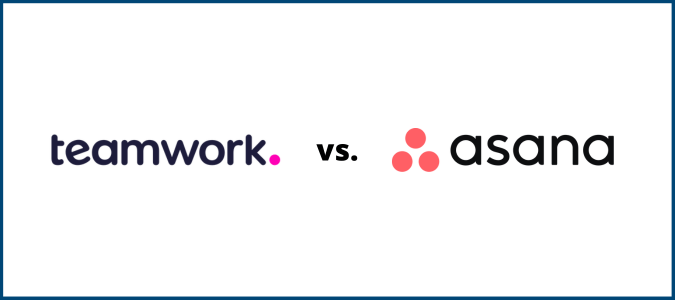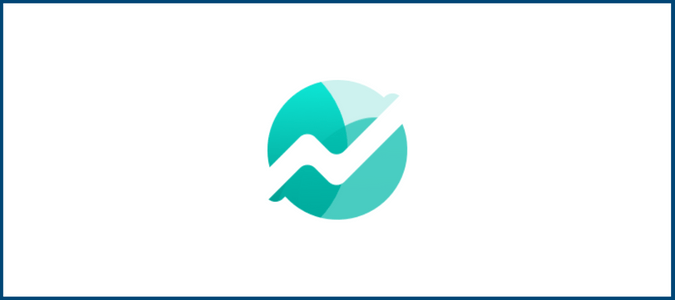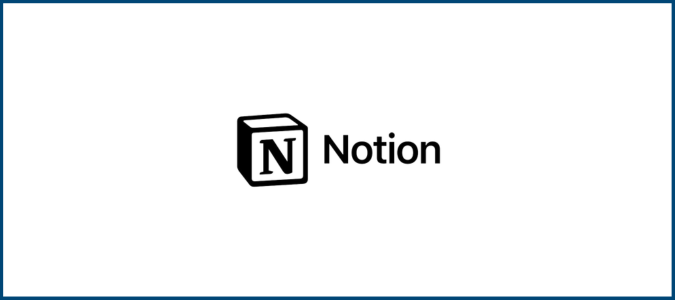Both Teamwork and Asana are project management tools that offer clean, easy-to-learn interfaces bolstered by a range of useful features for planning and managing projects.
Teamwork is a platform designed for individuals or smaller teams that work with clients. As project management tools go, it’s constantly credited as being one of the easiest to learn and use, and it includes some really great features like time tracking and client intake forms that other project management tools simply don’t have. You can get started with Teamwork today for free.
Asana is a popular choice for project management that helps individuals and teams set goals, track tasks, and organize their strategies. It’s user-friendly and intuitive, offering a wide array of templates, plus features for collaboration and automation, like task triggers, internal chats, and file sharing. Try Asana out on its free plan that includes many of its best features.

Teamwork and Asana Compared to the Best Project Management Software
Below you’ll find our Golden Eggs, which are our favorite project management software tools. We chose these based on how useful they are for a wide range of use cases. Both Teamwork and Asana made the full top list, but we’ve taken three potent alternatives from it to present below.
Monday.com is a great tool when it comes to delivering a combination of power and ease of use, which makes it our favorite choice for new users who don’t want to spend a long time learning new software. You can get started today for free.
ClickUp is an affordable tool that’s ideal for managing projects with remote workers and teams, supported by fantastic built-in features for collaboration and workflow customization. Start on ClickUp’s free plan or get unlimited storage and integrations for just $7 per user.
Smartsheet is a potent product management tool for people who like using spreadsheets or need something similar to Excel that packs a bigger PM punch. Try out Smartsheet on their free-forever plan.
Teamwork Compared to Asana
While we’d happily recommend both Teamwork and Asana, let’s take a quick look at what features and products each one offers. Each delivers similar tools and are easy to learn and use, but in this overview, we’ll talk about the key differences in their suitable use cases.
Teamwork Highlights
Teamwork’s self-named project management software is its main tool, and it really shines when it comes to client work within smaller teams with its focus on elements like time tracking and billing.
Teamwork’s basic plans cover all the features that an individual would need, like to-do lists, task breakdowns, and dashboards, while the more complex plans are targeted towards teams with features like client intake forms, reporting, invoicing, and client dashboard access.
Teamwork also delivers more advanced tools that can be leveraged separately or bundled with the main PM software. Users can share centralized mailboxes on Teamwork Desk, use Teamwork Chat to make communication between teams easier, leverage Teamwork’s CRM that makes it easier to manage a sales pipeline, and tap into Teamwork Spaces, which has features like required reading to help teams with onboarding and training.
Users are actually able to get all of these products together under the umbrella of Teamwork One, which is designed to give them a full project and team management experience using just one software. However, when it comes to basic project management, the original Teamwork software works just fine.
Asana Highlights
Asana is a great project management tool for both small and mid-size teams, but it’s also a great productivity tool for individuals who want to get organized. Solo users will appreciate Asana’s full-featured free-forever plan, which gives you all you need (and then some) to organize tasks, to-do items, and file storage and management.
You get three different project views, an easy-to-grasp interface, collaboration through in-platform messaging, and more, no matter which plan you choose. All of Asana’s plans also include powerful integrations with Microsoft 365, Google Workspace, Adobe Creative Cloud, Salesforce, and over 100 other tools.
On paid plans, you can unlock some really useful features. Set goals for your team or manage an entire portfolio of projects using Asana’s customizable dashboards. Agencies will love the unlimited guest access option and integrated forms for client work intake, while Agile teams will appreciate features for milestones and sprints, including custom fields and an automation builder that allow you to map Asana’s workflows to your organizational preferences.
Teamwork vs. Asana: Pros and Cons
Teamwork and Asana are similar in a lot of ways, much like a lot of the popular project management software available today. But there are key differences in some features and in each one’s suitability for different styles of project work. Let’s dive into where these two platforms rise to the occasion and where they might fall short.
Where Teamwork Shines
Simplicity: Both Asana and Teamwork are very easy to set up, but Teamwork is especially kind to beginners. A great little tutorial feature shows up when you first sign into Asana, walking you through each section of the interface and your first dashboard. Users can also customize their dashboard in terms of design and, through custom fields, in terms of key data. Users can view all of the projects they’re working on in one dashboard using the Everything feature.
Time tracking: One of the features Teamwork markets itself with is its time tracking feature, specifically because not many other project management tools offer it. But, aside from being able to track how long teams are spending on projects, this feature allows you to set up billable hour reports, which makes working with clients much easier. The time tracking feature is even available to use in Teamwork’s free plan.

Client management: Not only can you track time and billable hours directly in the platform, but users are also able to share invoices and intake forms with clients, and set permissions that allow clients to see partial views of the project dashboards. Although Asana has a few features that are similar, they don’t have the same range of features or client view settings, which makes Teamwork stand out for smaller teams or individuals using the platform to run their agencies.
Profitability tracking: Teamwork has some great features for tracking spending, creating budgets, and keeping down project spend. Users can customize budgets by project or time spent, and Teamwork’s interface does a great job of clearly showing users with graphs and colored highlights where they are with their spending. You can also get automatic notifications and alerts when you’re getting close to overspending or hitting specific milestones within a budget.

Where Teamwork Needs Improvement
Limits on free plan: Teamwork’s pricing is affordable, but it can creep up when you have to add more team members. Asana’s free plan allows up to 15 users, while Teamwork only allows for 5, which is a pretty significant difference. Furthermore, Teamwork understandably keeps some key features locked away on paid plans, but the lack of reports, integrations, and client intake forms is disappointing.
Security: While Teamwork is very much focused on supporting agencies and client work, it’s missing some key features for keeping your workspace secure. Only individual account owners can enable two-factor authentication from their account settings, so there’s no way for administrators to enforce it. Users have also found it hard to adjust privacy settings from their dashboard.
Where Asana Shines
Templates: Asana has a fantastic variety of useful templates for different purposes and industries, including ones for marketing, operations, and design. The templates are extremely detailed, giving teams real, tangible suggestions for tasks they should be completing, as well as layout and design suggestions. Teamwork has templates too, but Asana has a much bigger range and better specificity in those templates in terms of industry or department fit.
Automation: When you get your hands on Asana’s intuitive and useful automation features, you’ll likely wonder how you did work efficiently before you were using it. For example, Asana lets users set up rules that speed up processes, including things like updating task statuses automatically after an action is taken or notifying team members when a task is marked as complete. Not only does this minimize mistakes by automating things like reminders, but it also streamlines daily project work, which is exactly what Asana is designed for.

Collaboration: Asana was originally designed by two former Facebook employees who wanted to improve internal teamwork, and it shows. Not only does Asana have a built-in messaging system and file-sharing features, but it’s also easy for users to assign tasks and invite team members to new projects. Plus, Asana updates users when any changes or revisions are made to projects, so it’s a great tool for teams whose goal is to improve communication.
Agile PM: Agile teams tend to love Asana. You get features for sprint planning, bug tracking, and roadmaps in an intuitive package. Some key Agile features are locked away on the highest-priced Asana plan, but milestones, start dates and times, and timelines come standard on any paid plan.

Where Asana Needs Improvement
Time tracking: While Asana is great for teams and client-facing work in other ways, a glaring difference between it and Teamwork is regarding time tracking features. Teamwork is much better at assessing how long a project is taking or reporting time to a client. Asana does offer some time tracking features for premium or enterprise customers, but they’re not as intuitive as Teamwork’s and also don’t come with the same billable hour or other reporting features.
Task assignment: In general, the task assignment in Asana could be better, not just for between users but also with guest users. With Teamwork, there are many options and settings for adding clients to projects, while in Asana they are somewhat limited. Asana is also very rigid when it comes to assigning tasks to different team members or changing permissions, which can be frustrating.
The Last Word on Teamwork Compared to Asana
With either Teamwork or Asana, you’re getting a well-crafted and valuable project management system, either for free or at an affordable rate. For both individuals and teams, these tools are powerful ways to get organized, keep track of projects, and streamline everyday tasks.
However, even though both are of high quality in our eyes, there are key differentiators. Teamwork is just overall better for client-facing work and folding stakeholders into the interface. Plus, you can tap into convenient invoicing and time-tracking features. Similarly, if you’re working in a slightly bigger team and communication and saving time are the top priorities, Asana’s collaboration and automation features are going to be the biggest asset for you.
These are just two quality options in the market of PM software. We’ve assessed Teamwork and Asana alongside several other top choices in our full post on the best project management software.














